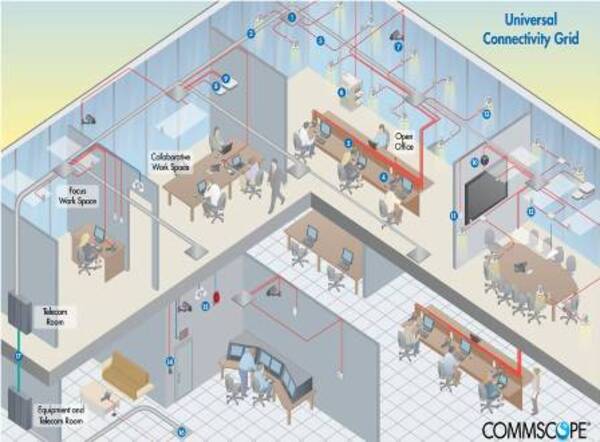
Common popular belief states that we only use a small percentage of our brains, and that extra-sensory perception (ESP) powers are accessible to humans by harnessing the capabilities of unused parts of the brain. Although science has categorically debunked both these notions with regard to the human brain, the concepts can be applied to the untapped potential of the “brain” in a smart building, especially given the ever increasing advances in smart building technologies—from sensors to connectivity to data analytics.
As smart buildings develop “brains” though the integration of technologies, questions will be raised regarding whether a building is using its brain to full capacity, or if it has untapped ESP potential.
Relax. Even though some of the capabilities available to smart buildings may be close to those identified as ESP, such as telepathy (wired and wireless, point to point, machine to machine communications), clairvoyance (local and remote data collection and integration) and precognition (predictive analytics), I’m not talking about the paranormal. I’m talking about unleashing a building’s Efficiency, Security, and Productivity (my alternative definition of ESP) potential through the deployment of a state-of-the-art connectivity platform.
Most modern enterprise buildings claim to be intelligent, but some are smarter than others. A typical intelligent building deploys basic technologies to integrate HVAC systems, and has a multitude of separate systems for vital operational requirements such as access control, lighting, elevator control, metering, paging, audiovisual, IT systems, and others. When it comes to Efficiency, Security and Productivity, however, it is becoming increasingly clear that many so-called intelligent buildings are a long way from unlocking their potential.
The potential to unleash the ESP capabilities of an intelligent building requires consideration and integration of a wide range of technologies and devices, including:
- Efficiency: sensor technologies and predictive “big data” analytics enable an intelligent building to optimize the use of traditional utilities such as water, gas, and electricity. Leading edge communication technologies and protocols, including VoIP, Power over Ethernet, WiFi and in-building wireless systems provide efficient use of the wired infrastructure and wireless spectrum.
- Security: technologies such as wired and wireless sensors, cameras, access control, people counting devices, pattern recognition software, automated infrastructure management (AIM), secure network devices and event monitoring strengthen both the physical security and cybersecurity of the building.
- Productivity: employee motivation and general well-being are improved with technologies such as personalized comfort systems, networked low voltage mood lighting, real-time wayfinding, conference room management, collaboration technologies, and seamless wired and wireless connectivity.
As a result, the proliferation of wired and wireless devices in smart buildings presents new challenges to IT, facilities and corporate real estate departments. A key challenge is the selection and deployment of the appropriate physical connectivity platform. The physical connectivity platform must allow for the provision of data communications and power to a wide range of devices in a variety of locations. It must also be flexible and cost-effective for moves, adds, and changes, in order to support increasingly dynamic workplace environments. Ideally, it must also have built-in intelligence to automatically map physical connectivity and improve mean time to response/repair in the event of a connectivity failure.
An emerging physical layer architecture for intelligent buildings, the Universal Connectivity Grid (UCG) is designed to deliver high bandwidth and remote powering capabilities in support of Intelligent Building applications, while providing improved efficiency and flexibility. Based on a zone or grid pattern, rather than a desk or device-centric connectivity approach, the UCG can be designed to provide optimal connectivity and capacity as well as AIM capabilities within a building. As the increasing focus in Efficiency, Security and Productivity drives the deployment of a growing number of wired and wireless devices in buildings, a Universal Connectivity Grid provides a critical foundation that allows building owners, operators and/or tenants to unleash the building’s ESP potential.
CommScope offers its vantage point on the Universal Connectivity Grid in the Connected and Efficient Buildings e-book. In it, we offer best practices for the UCG and other network technologies that comprise an intelligent building. Download your free copy now to see what how a Universal Connectivity Grid can unleash your building’s ESP.





